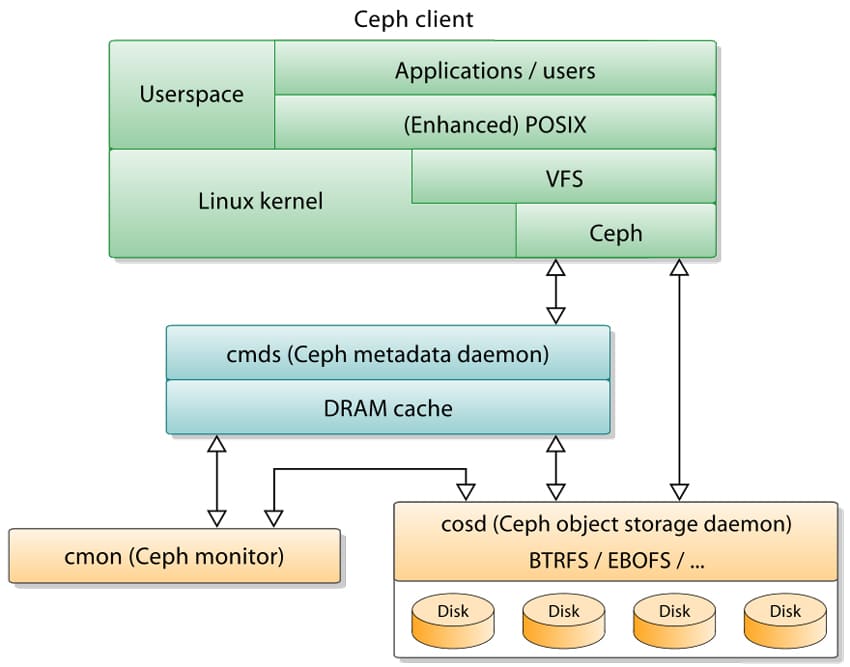
Today at OpenStack Summit in Sydney, Australia, Red Hat Inc. announced a big upgrade to its massively scalable, software-defined object storage platform, Red Hat Ceph Storage 3. This latest version is based off of the community version of the open source Ceph Luminous project, to which Red Hat is a leading code contributor. Red Hat Ceph Storage 3 introduces support for block storage via iSCSI and file storage via CephFS, strengthening support for OpenStack and heterogeneous environments.

Ceph is a software-defined storage system that runs on commodity hardware. Ceph is massively scalable by design. The design makes it enable and support enterprises' digital transformation efforts through web scale object and cloud infrastructures. According to the company, the latest version of Red Hat Ceph Storage enables more robust and better performance at scale, and introduces the ability to deploy storage in containers for greater cost-savings and operational efficiencies. This new version also introduces a new GUI with dozens of new dashboards (based on the upstream Ceph Metrics project) to ease user experience through proactive monitoring and troubleshooting of distributed storage clusters. Red Hat Ceph Storage 3 also adds dynamic bucket sharding, designed to help simplify maintenance and lower operational costs.
Red Hat Ceph Storage 3 includes the following highlights:
- Enables a large variety of storage needs in OpenStack, helping enterprises fully exploit the scale of the platform for cloud infrastructure deployments without incurring costs of discrete storage systems that need to be procured and managed separately. The introduction of CephFS, a POSIX-compatible, scale-out file system complements the existing block and object storage support provided by Red Hat Ceph Storage for OpenStack. Customers will be able to incorporate storage more effectively with OpenStack for private cloud deployments across a number of use cases including web-scale cloud, Network Functions Virtualization infrastructure (NFVi), and development/compute clouds.
- Eases migration from legacy storage platforms through newly added support for the iSCSI interface for wider platform support and increased breadth of use cases, including backup and recovery. This is particularly beneficial to heterogeneous storage environments such as VMware and Windows that lack a native Ceph driver. The iSCSI gateway enables enterprises to use a single, cost-effective, and highly scalable, block storage platform for existing virtualization infrastructure alongside their use of Ceph with modern workloads, reducing the need for dedicated Storage Area Networks (SAN).
- Deploys enterprise storage in Linux containers for simplified operations and a smaller hardware footprint. Containerized storage daemons enable users to run Red Hat Ceph Storage on fewer servers by co-locating services that previously required dedicated hardware, while avoiding the risk of resource conflicts. Preliminary tests based on a standard Red Hat Ceph Storage cluster configuration showed lowered hardware expenditure by at least 24 percent. This is particularly relevant to telco customers, such as those implementing NFVi, who struggle with hardware and space constraints.
Availability
Red Hat Ceph Storage 3 is expected to be generally available this month.
Sign up for the StorageReview newsletter
